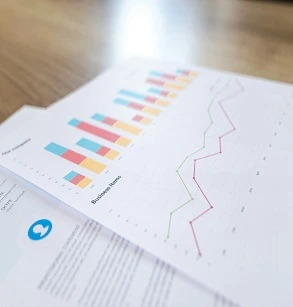Are you interested in Marketing? Then this is the perfect course for you. Learn how to manage Marketing professionally!
500 Hours Duration
Completion Certificate
No Entry Requirements
Endorsed Courses
Get Your Course Now
Only 1 Day Left at this price
Discount 80% £860.00


Course Overview
Level 6 Diploma in Professional Marketing
Interested in a high-profile career in marketing and advertising? Looking to take an existing marketing career to the next level? With this Level 6 Diploma in Professional Marketing, your success story starts today!
Study online with CPD Courses, for the chance to enhance your long-term outlook. Boost your CPD profile with a Professional Diploma in Marketing Level 6 and explore a world of incredible career prospects. Designed exclusively for home study, this 100% online program offers a flexible and accessible alternative to conventional education. Study from any location at a time and pace to suit your lifestyle, with no time restrictions imposed or deadlines to worry about.
This advanced Level 6 Diploma in Professional Marketing takes place over a series of 17 modules, each concluding with an online assessment. Key topics covered include market research, consumer behaviour analysis, markets and market segmentation, an introduction to the marketing mix, product development, a breakdown of the product lifecycle, branding and packaging considerations, product pricing strategies and an introduction to digital marketing.
On-demand tutor support is available from start to finish and all course materials are included in the initial fee as standard. Sign up online and get started right now, or contact a member of the team at CPD Courses if you have any questions.
Who Should Take This Course
- Marketing professionals aiming to upgrade their skills and take on mid-to-senior level roles
- Business owners looking to understand strategic marketing tools to improve visibility and sales
- Graduates seeking to transition into marketing roles with strong foundational and advanced knowledge
- Sales and customer service personnel eager to enhance their understanding of consumer behaviour, branding, and digital marketing
- Entrepreneurs wanting to manage marketing efforts more effectively through skills in SEO, PPC, and social media branding
- Individuals preparing for marketing leadership roles in corporate or consultancy settings
- Anyone aiming to advance their career prospects with a comprehensive qualification in modern marketing
Course Syllabus
This advanced marketing diploma is delivered over a course of 17 in-depth modules, as outlined below:
Module 1 - Introduction to Marketing
The course begins with a detailed examination of the marketing landscape, along with the role marketing plays in the performance and prosperity of most organisations. Important differences between selling and marketing are also discussed, along with the benefits of effective marketing and typical roles and responsibilities in a marketing setting.
Module 2 - Marketing Environment
An overview of the major marketing environments follows in the second module, in which candidates consider the internal environment, external environment and micro environment from a marketing perspective. Several key demographic factors are also brought into discussion, along with situation analysis and more.
Module 3 - Markets and Market Segmentations
Candidates then learn how effective segmentation is an essential contributor to the success of a broader marketing strategy. Several different market types and their individual characteristics are discussed, including consumer markets and organisational markets. The potential consequences of inadequate segmentation are also examined.
Module 4 - Consumer Behaviour
The benefits of effective consumer behaviour analysis are detailed and discussed in the fourth module, in which candidates consider the meaning and importance of consumer behaviour. Some of the main factors that influence consumer behaviour are discussed, along with the different types of consumers and their defining characteristics.
Module 5 - Market Research
Tools, techniques and guidelines for performing detailed market research are provided in the fifth module, which provides a detailed breakdown of the market research process. Candidates learn how to approach respondents in an appropriate way, use professional interview techniques to obtain important information and effectively analyse the data collected.
Module 6 - Marketing Planning
Planning as a decisive factor in the success of a marketing strategy is then discussed, guiding learners through the marketing planning process step by step. The functions and objectives of the marketing audit are also discussed, along with the importance of establishing viable and measurable corporate objectives in marketing.
Module 7 - Product Development and Product Lifecycle
A detailed breakdown of the product lifecycle and its main phases follows, alongside a series of new product development concepts. The value and importance of innovation in product development is also brought into discussion, along with concept development and testing, idea vetting and assessing product performance.
Module 8 - Product Pricing Strategies
The criticality of appropriate product pricing is explored in Module Eight, in which candidates learn how to calculate and implement pricing structures in accordance with a variety of factors. The function and value of price is discussed, along with the primary objectives of pricing and the potential consequences of inappropriate pricing structures.
Module 9 - Branding and Packaging
Several major branding and packaging considerations are brought into discussion in Module Nine, which explores the limitless benefits of a high-impact branding strategy. The benefits and drawbacks of several different types of packaging are also discussed, along with cost considerations in packaging and common packaging criticisms.
Module 10 - Channels of Distribution
Candidates then learn how to assess the effectiveness, appropriateness and efficiency of various distribution channels. The primary functions of distribution channels are explored, along with factors that can affect distribution channel appropriateness and the potential benefits of combining multiple channels of distribution.
Module 11 - Promotion Mix
The meaning and importance of promotion are considered in Module 11, in which candidates learn how promotion and marketing are two different yet equally important concepts. A detailed breakdown of the promotion mix is also provided, along with each of its main components.
Module 12 - The Importance of Body Language in Sales
Non-verbal cues as a high impact selling tool are discussed in Module 12, outlining the importance of effective use of body language. The use of facial expressions and gestures as selling tools is also discussed, along with how and why relationship establishment is of such importance in marketing.
Module 13 - Techniques for Maximum Sales
Tips and guidelines for maximising the size and value of every sale are presented in Module 13, along with how to successfully close as many sales as possible. The concept of personal selling is also introduced, alongside a series of pointers for ‘smarter’ selling and productivity techniques to maximise sales.
Module 14 - Creativity and Innovation
Creativity and innovation as essential performance drivers are then brought into discussion, in which candidates consider the value of creativity and innovation in all business settings. Individual and group techniques for enhanced creativity are discussed, along with how to inspire a workforce to become more creative and innovative in general.
Module 15 - Creating a PPC Campaign
Course content then shifts to digital marketing channels, providing a detailed introduction to Pay Per Click (PPC) advertising. Candidates are guided through the process of setting up, launching and running a PPC campaign, while learning how to set an appropriate PPC budget and monitor the effectiveness of their digital strategy.
Module 16 - Building a Brand on Social Media
Social media’s unique scope as a brand development tool is then examined, in which candidates learn how to create brand-focused messages for use on a variety of social channels. Helpful tips and guidelines for gaining maximum value from an investment in social media marketing are also provided.
Module 17 - Search Engine Optimisation (SEO)
Concluding the course, Module 17 provides an essential introduction to the basics of search engine optimisation (SEO). The potential benefits of an effective search marketing campaign are discussed, along with how SEO differs from other types of digital marketing and how to drive targeted traffic with appropriate keywords.
Career Path
Whether new to marketing or ready to take an existing career a step further, this Level 6 Diploma in Professional Marketing could make all the difference. Typical job titles in the field of market and advertising include Marketing Analyst, Marketing Manager, Promotions Manager, Sales Lead, Social Media Specialist, Digital Marketing Consultant, Brand Strategist, Brand Marketing Specialist and many more besides. All with near-limitless earnings potential for qualified and capable candidates with plenty of practical experience.
Endorsement
At the end of this course successful learners will receive a Certificate of Achievement from the Quality Licence Scheme and a Learner Unit Summary (which lists the components the learner has completed as part of the course).
This course and/or training programme has been endorsed by the Quality Licence Scheme for its high-quality, non-regulated provision and training programmes. This course and/or training programme is not regulated by Ofqual and is not an accredited qualification. Your training provider will be able to advise you on any further recognition, for example progression routes into further and/or higher education. For further information please visit the Learner FAQs on the Quality Licence Scheme website.
FAQs
1. What are the four eras of marketing?
The four eras of marketing are the Production Era, Sales Era, Marketing Era, and Relationship Era—each reflecting a shift in how companies view customers and the market.
2. What is value-based marketing?
Value-based marketing focuses on delivering high value to customers by aligning products or services with their needs and expectations, building long-term relationships rather than short-term sales.
3. What is grid in marketing?
A marketing grid is a strategic tool that helps businesses identify and evaluate different combinations of products and markets, such as in the Ansoff Matrix (market penetration, market development, product development, diversification).
4. What is brand repetition?
Brand repetition refers to the consistent presentation of brand elements (such as logo, slogan, and design) across all marketing channels to improve brand recall and recognition.
5. What are marketing ethics?
Marketing ethics involve applying ethical principles to marketing decisions, ensuring honesty, fairness, and responsibility in advertising, customer communication, pricing, and data usage.
6. Does this course include practical case studies or examples?
Yes, the course features real-world examples and scenarios to help learners understand marketing principles in action and apply them effectively.
7. Is this diploma suitable for people new to the field of marketing?
Absolutely. This course is designed for beginners and professionals alike, with step-by-step modules that start from the basics and progress to advanced topics.
8. Will I learn about digital marketing in this course?
Yes, modules on Pay Per Click (PPC), social media branding, and SEO provide comprehensive coverage of digital marketing strategies and tools.
9. Can I access this course from anywhere in the world?
Yes, this is a fully online course. Learners from any location with internet access can enrol and complete the course at their own pace.
10. Are assessments or quizzes included in the course?
Yes, periodic assessments are included to reinforce learning outcomes and test your understanding of each module.


Your Certificate, Delivered Instantly & Professionally
Finish your course and instantly download your PDF certificate to share or showcase. Prefer a hard copy? We’ll send you a beautifully printed version, ready to frame and display with pride!
Recognised CPD Certification
Earn a fully accredited CPD certificate that’s respected across industries.
Instant Download & Print
Download your certificate immediately after completing your course – perfect for your records or CV.
Printed Copy Included
You’ll also receive a professionally printed certificate delivered straight to your door – ideal for framing and display.

Verifiable Unique ID
Each certificate includes a unique ID number, easily verifiable by employers.
High-Quality Print
Enjoy a professionally printed certificate that looks impressive and feels premium.
Completion dates included
Your certificate clearly displays the completion date, making renewal planning simple.
What our Students say
Celebrating our Clients and Partners





























